
1. Understanding the relationship between gum disease and oral cancer
When patients ask, can gum disease lead to oral cancer, they are addressing a growing concern among dental professionals and medical researchers. Gum disease, also known as periodontal disease, is a chronic infection of the gums caused by bacterial buildup. Oral cancer, on the other hand, is a malignant condition that develops in tissues of the mouth, tongue, or throat. While gum disease itself does not directly transform into cancer, studies suggest that chronic inflammation and bacterial activity in the gums may increase the risk of developing oral cancer.
1.1 Inflammation as a shared pathway
Both gum disease and oral cancer involve persistent inflammation. In periodontal disease, the immune system is constantly fighting bacteria, which creates a chronic inflammatory environment. Over time, this environment may damage DNA in surrounding tissues, potentially setting the stage for cancerous changes.
1.1.1 Case insight
A middle-aged man with a long history of untreated gum disease developed suspicious lesions on his tongue. Although not every case progresses this way, dentists stress that chronic gum infections can complicate oral health and create higher cancer risks.
2. What gum disease does to oral tissues
Gum disease progresses from gingivitis, marked by swollen gums, to periodontitis, where gums recede and bone loss occurs. The constant bacterial attack weakens the mouth’s natural defenses and creates entry points for harmful pathogens.
2.1 Systemic effects
Research also links gum disease to conditions such as diabetes, heart disease, and stroke. This systemic connection suggests that bacteria and inflammatory signals do not stay confined to the mouth, increasing overall health risks.
2.1.1 Long-term exposure
When the oral cavity is constantly inflamed, tissues may become more susceptible to mutations that can, in rare cases, contribute to cancer formation.
2.2 Overlapping symptoms
Symptoms like bleeding gums, persistent sores, and oral discomfort may overlap between gum disease and early oral cancer, making regular dental checkups vital for early detection.
3. Risk factors linking gum disease and oral cancer
Several risk factors overlap for both gum disease and oral cancer, creating a compounding effect when they occur together.
3.1 Tobacco and alcohol use
Smoking and heavy alcohol consumption remain leading risk factors for oral cancer. These habits also worsen gum disease by impairing healing and promoting bacterial growth.
3.1.1 Combined effect
A smoker with untreated gum disease faces a significantly higher risk of oral cancer compared to someone who avoids both smoking and alcohol.
3.2 Poor oral hygiene
Neglecting brushing, flossing, and professional cleanings creates an environment for bacteria to thrive. This not only accelerates gum disease but may also contribute to the onset of precancerous changes.
3.2.1 Example story
A retired worker admitted he skipped dental care for decades. When he finally sought treatment, his dentist discovered advanced periodontitis along with early-stage oral cancer, illustrating how lack of care compounds risks.
4. Scientific research on gum disease and oral cancer
Studies in the United States and abroad have shown correlations between chronic gum disease and higher incidences of oral and throat cancers. While correlation does not equal causation, the findings are strong enough that dentists and oncologists recommend proactive oral care as a preventive measure.
4.1 Biological explanation
Researchers believe harmful bacteria release toxins that damage cells, while inflammation creates an environment favorable to tumor growth. This dual impact underscores the importance of keeping gums healthy.
4.1.1 Expert opinion
Dental associations emphasize that treating gum disease may lower not only oral cancer risk but also overall health complications.
5. Prevention strategies and proactive care
While gum disease does not guarantee oral cancer, prevention plays a major role in lowering risks. Maintaining excellent oral hygiene reduces bacterial load and inflammation.
5.1 Daily practices
Brushing twice daily, flossing, and using antibacterial mouth rinses are essential habits. Seniors and individuals with chronic conditions should pay even closer attention to these routines.
5.1.1 Professional care
Regular cleanings and exams allow dentists to identify early gum disease and suspicious lesions before they become serious health threats.
5.2 Lifestyle adjustments
Avoiding tobacco, limiting alcohol, and eating a balanced diet rich in fruits and vegetables strengthen oral tissues and immune defenses.
5.2.1 Long-term protection
Patients who adopt healthier lifestyles often see improvements not only in gum health but also in overall vitality and confidence.
6. How Family Dentistry Online supports patients
For anyone asking can gum disease lead to oral cancer, the answer lies in prevention, awareness, and timely care. Family Dentistry Online connects patients with resources and professionals who specialize in gum health and early cancer detection, ensuring comprehensive support.
6.1 Trusted guidance
By offering education, treatment recommendations, and personalized care options, Family Dentistry Online helps families make informed decisions about oral health.
6.1.1 Encouragement for action
Taking steps today to treat gum disease not only preserves a healthy smile but also safeguards against more serious conditions in the future.



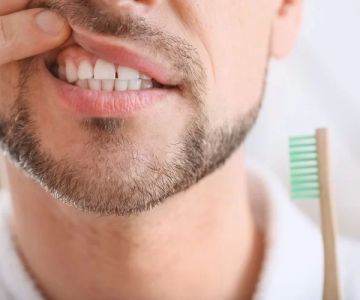
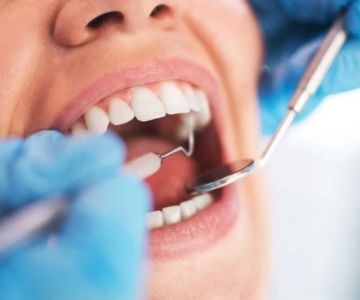
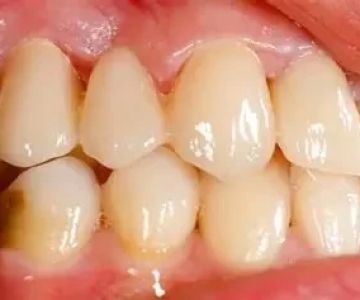

 HealthPartners Dental Specialty Center Woodbury - Lake Elmo3.0 (38 review)
HealthPartners Dental Specialty Center Woodbury - Lake Elmo3.0 (38 review) Madison Oral Surgery & Dental Implants4.0 (661 review)
Madison Oral Surgery & Dental Implants4.0 (661 review) Dr. David Miller DDS5.0 (1 review)
Dr. David Miller DDS5.0 (1 review)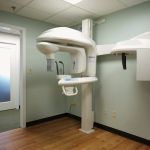 Oral & Maxillofacial Surgery Associates4.0 (1440 review)
Oral & Maxillofacial Surgery Associates4.0 (1440 review) Central Jersey Medical Center3.0 (290 review)
Central Jersey Medical Center3.0 (290 review) Cherry Valley Dental4.0 (115 review)
Cherry Valley Dental4.0 (115 review) The Importance of Oral Health Education During Pregnancy for a Healthy Pregnancy
The Importance of Oral Health Education During Pregnancy for a Healthy Pregnancy Best Tips for Brushing Your Teeth Properly for Healthy Gums: Essential Techniques for Oral Health
Best Tips for Brushing Your Teeth Properly for Healthy Gums: Essential Techniques for Oral Health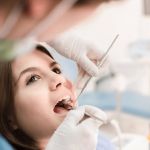 Why Skipping Dental Checkups Can Lead to Bigger Oral Health Problems
Why Skipping Dental Checkups Can Lead to Bigger Oral Health Problems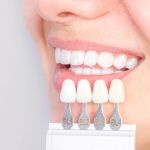 Advantages of Porcelain Dental Restorations
Advantages of Porcelain Dental Restorations How Can Diabetes Cause Tooth and Gum Problems? Preventing and Managing Oral Health Issues
How Can Diabetes Cause Tooth and Gum Problems? Preventing and Managing Oral Health Issues Healthy Habits for Promoting Good Oral Health and Hygiene: Tips for a Healthy Smile
Healthy Habits for Promoting Good Oral Health and Hygiene: Tips for a Healthy Smile